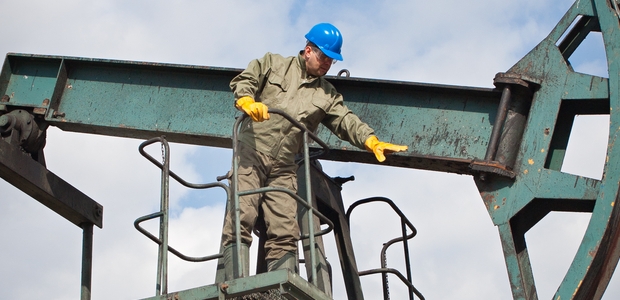
Preventing Serious Heat Problems
Three key words—water, rest, and shade—are at the heart of precautions that can prevent serious heat illnesses.
- By Jerry Laws
- Jun 01, 2014
OSHA points out that heat exposure occurs in many occupations, ranging commercial kitchens and laundries to chemical plants and foundries. Those working outdoors in hot weather and direct sun—including farm workers, construction workers, oil and gas extraction workers, landscapers, emergency responders--also may be at higher risk of heat-related illness.
Heat-related illnesses can be prevented, if you know the symptoms of these illnesses and are aware of environmental factors that can put employees at risk.
Symptoms
Heat stroke is the most serious health problem connected to working in hot environments. The body's temperature regulatory system fails and sweating becomes inadequate. Body temperature may be 105 degrees Fahrenheit or higher, the victim's skin is dry and hot. He or she may be confused and can experience convulsions or lapse into unconscious. Prompt, appropriate treatment is essential.
Heat exhaustion happens when the individual loses a large amount of fluid by sweating. He still sweats but also may be fatigued, giddy, or nauseous. His skin is clammy and moist, with body temperature normal or slightly elevated. Treatment usually involves having the victim rest in a cool place and drink plenty of liquids.
Heat cramps are muscle spasms felt by workers who sweat profusely and drink large quantities of water but do not adequately replace salt loss.
Heat rash can occur in hot, humid environments where sweat is not easily removed from the surface of the skin by evaporation and the skin remains wet most of the time. A skin rash results because the sweat ducts become plugged.
Best Practices for Hot Environments
It's difficult or impossible to cool some working environments. Workers can prepare for them by gradually adjusting to a hot environment--a process called heat acclimatization--over a period that may last as little as one week.
"Gradual exposure to heat gives the body time to become accustomed to higher environmental temperatures," NIOSH noted in a 1986 brochure about heat illnesses. "Heat disorders in general are more likely to occur among workers who have not been given time to adjust to working in the heat or among workers who have been away from hot environments and who have gotten accustomed to lower temperatures. Hot weather conditions of the summer are likely to affect the worker who is not acclimatized to heat. Likewise, workers who return to work after a leisurely vacation or extended illness may be affected by the heat in the work environment. Whenever such circumstances occur, the worker should be gradually reacclimatized to the hot environment."
Plan your rest and drink breaks, offering thirst quenchers or water to ensure workers are adequately hydrated. OSHA suggests drinking about water every 15 minutes; its Technical Manual on heat stress included a discussion of work-load assessment, Wet Bulb Globe Temperature calculations, PPE, and engineering and administrative controls.
Environmental Factors
Heat's effect on workers depends on many factors, including their age, physical condition, use of alcohol and certain drugs, and medical conditions, including hypertension.
Employers should provide cool rest areas if possible and should schedule the most difficult tasks so they are done during cooler times of day. NIOSH suggests using work-rest cycles to give a worker's body an opportunity to get rid of excess heat and slow down the production of internal body heat.
If the work is taking place indoors, use fans, air conditioning, and exhaust ventilation to increase air flow. Personal cooling devices--vests, bandannas, etc.--are options for some environments, especially for employees who must wear protective clothing.
How to Respond When a Worker is Ill
Three key words—water, rest, and shade—are at the heart of precautions that can prevent serious heat illnesses.
OSHA's Quick Card about heat illness prevention recommends taking these actions when a worker is ill from the heat:
1. Call a supervisor for help. If a supervisor is not available, call 911.
2. Have someone stay with the worker until help arrives.
3. Move the worker to a cooler/shaded area.
4. Remove the worker’s outer clothing.
5. Fan and mist the person with water; apply ice bags or ice towels.
6. Provide cool drinking water, if the individual is able to drink.
This article originally appeared in the June 2014 issue of Occupational Health & Safety.